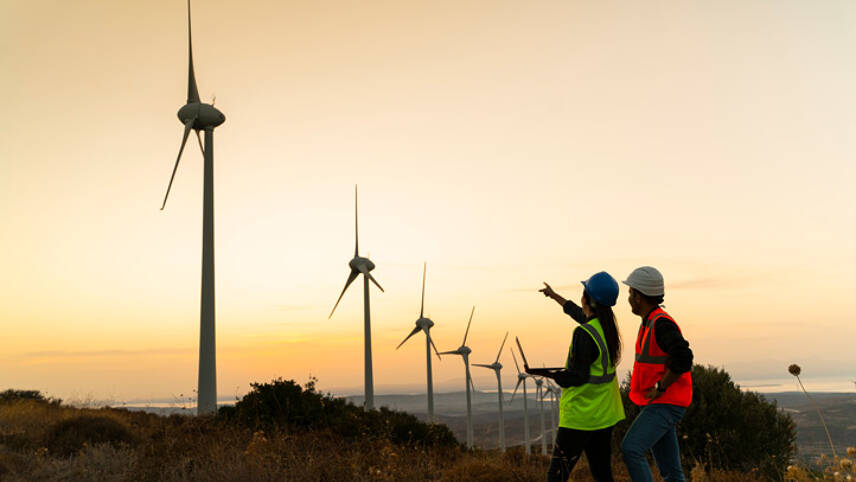Register for free and continue reading
Join our growing army of changemakers and get unlimited access to our premium content

Published late on Thursday (26 January), the analysis assesses energy transition investment from public and private sources on a global scale and also looks at investment trends within specific key markets.
The overall conclusion is that the skyrocketing price of energy, led by gas price rises, prompted governments to significantly increase their direct spending, and to implement changes to policy and legislation designed to unlock additional energy transition funding from the private sector.
BNEF reveals in the analysis a 31% year-on-year increase in total global spending on energy-transition-related infrastructure and activities, to $1.1trn. This is the first time the figure has surpassed the $1trn mark, which is around the amount invested in fossil fuels in 2022.
On a global basis, investment was up in almost every related sector, including wind power generation, solar power generation, energy storage, energy efficiency, hydrogen, electrified heat and carbon capture. Only nuclear power investment did not set a record, with BNEF recording only a slight uptick.
The second biggest year-on-year increase in investment was recorded in the electrified transport sector. $466bn was spent in this sector in 2022, up 54% year-on-year. This brings the total level of investment close to that in renewables, which was $495bn in 2022.
Hydrogen is, however, the fastest-growing sector with investment more than tripling over the year before. Its share of funding from the global $1.1trn total is still less than 1%, though.
As is to be expected amid a new era of supply chain disruption, BNEF also reports that manufacturing investment grew to $78.7bn in 2022, up from $52.6 bn in 2021. Batteries and solar were the main contributors to this.
Country by country
China accounted for around half of the $1.1trn total, BNEF concluded. It also accounted for 91% of global investment in manufacturing.
In total funding terms, EU came in at a distant second, accounting for $180bn. The US accounted for $141bn.
While the UK remained a top-five contributor to energy transition investment, BNEF placed it fifth, down from fourth last year. It recorded a 20% decrease in investment overall. This is primarily attributed to decreased spending in the wind energy sector, due to the timings of Contracts for Difference (CfD) auction rounds and the Crown Estate’s seabed leasing rounds.
EY’s most recent ranking of nations by how attractive their renewable energy investment landscape is, published in November, placed the UK at fourth, down from third. Germany overtook the UK due to its pledge for an 80% renewable electricity mix by 2030. EY also accounted, like BNEF, for a drop in wind investment and for failing to streamline the planning and development process for renewables as much as its competitors.
Further acceleration needed
BNEF’s head of global analysis Albert Cheung said: “Our findings put to bed any debate about how the energy crisis will impact clean energy deployment. Rather than slowing down, energy transition investment has surged to a new record as countries and businesses continue to execute on transition plans. Investment in clean energy technologies is on the brink of overtaking fossil fuel investments, and won’t look back.
“These investments will drive short-term job creation and help to address medium-term energy security objectives.”
But Cheung had a word of caution, stating that “much more investment is needed to get on track for net-zero in the long-term”.
BNEF estimates that the world must invest an annual average of $4.55trn for the remainder of the decade to lay the foundation for an orderly transition to net-zero by 2050. This figure includes power grid upgrades. When power grid upgrade funding is added to the $1.1trn detailed above for 2022, the total 2022 investment was $1.38trn.
This call to accelerate investment echoes those made by the International Energy Agency (IEA).
The IEA last month revealed a significant uptick in renewable energy investment and deployment in 2022 and forecast significant growth to come through to 2027. Nonetheless, this is not consistent with its own net-zero pathway for 2050. The IEA has also tracked a 16% year-on-year increase in energy efficiency investment for 2022, delivering a 1% decrease in energy intensity. But the IEA’s 2050 net-zero scenario involves an average decrease of 4% each year.


Please login or Register to leave a comment.